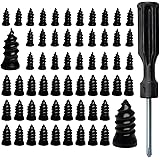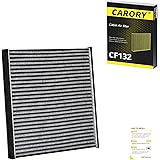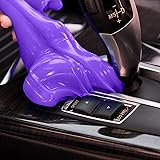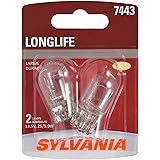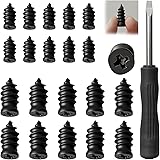Table of Contents
Are you ready to turn your truck into a powerful tool for many activities? Installing a winch in your truck bed is more than just for off-road adventures or getting stuck vehicles unstuck. It opens up a whole new world of possibilities. Lets explore How To Mount A Winch In Truck Bed
Whether you love the outdoors or work hard, a winch installation can change the game. It lets you tackle tough terrain, help get stuck vehicles unstuck, and even handle heavy tasks.
This guide will show you everything you need to know about truck winch mounting. From getting ready to finishing the job, we’ve got you covered.
Key Takeaways
- Understand the benefits of mounting a winch in your truck bed
- Learn the essential steps for a successful winch installation
- Discover how a winch can enhance your truck’s capabilities
- Gain insights into the importance of proper winch mounting
- Explore the versatility a winch brings to your truck
Understanding Truck Bed Winches
Truck bed winches are key for off-road adventures and heavy loads. They make it easier to load heavy items into your truck bed.
Types of Winches Suitable for Truck Beds
There are electric and hydraulic winches for truck beds. Electric winches are easy to use and affordable. Hydraulic winches are more powerful, great for heavy-duty tasks.
Benefits of Installing a Winch in Your Truck Bed
A winch boosts your truck’s off-road skills. It helps pull your truck out of tough spots. It’s also handy for lifting heavy items into your truck bed.
“A winch is an indispensable tool for any serious off-road enthusiast or heavy-duty worker.”
Weight Capacity Considerations
Choosing the right winch is crucial. It should handle at least your truck’s weight, and more is better. Below is a table showing weight capacities for different winches.
| Winch Type | Weight Capacity |
|---|---|
| Electric Winch | Up to 10,000 lbs |
| Hydraulic Winch | Up to 50,000 lbs |
Essential Tools and Materials for Winch Installation
Before starting the winch installation, gather all needed tools and materials. Having everything ready makes the process smoother and reduces risks.
Required Tools Checklist
The toolkit should include a socket wrench set, drill and drill bits, screwdrivers, pliers, and an angle grinder. These tools prepare the mounting area and secure the winch.
Necessary Hardware and Mounting Plates
You’ll need a mounting plate for your winch and truck bed, plus electrical tape for wiring. Make sure the mounting plate fits your winch and truck.
Safety Equipment
Safety equipment is key during installation. Wear gloves for hand protection, safety glasses for eye safety, and have a first aid kit nearby.
With all essential tools and materials ready, you’re set for a safe and efficient winch installation.
Preparing Your Truck Bed for Winch Installation
Getting your truck bed ready for a winch is a key step. It makes sure the winch is safe and works well. This process includes several important steps for a strong and useful winch setup.
Cleaning and Inspecting the Mounting Area
The first thing to do is clean and check the mounting area well. Get rid of any dirt, debris, or old parts that might get in the way. Look for any damage or weak spots that could harm the winch’s performance.
Measuring and Marking for Precise Placement
Measuring right is key for the winch’s correct spot. Measure the truck bed to find the best place for the winch, considering its type and specs. Use a marker or chalk to mark the holes for drilling.
Different Truck Bed Types and Their Considerations
Each truck bed is different, which can change how you install a winch. For example, flat beds are easier, but stepped or ridged beds need special care. Here’s a table to help with your truck bed:
| Truck Bed Type | Considerations |
|---|---|
| Flat Bed | Easy to mount, straightforward installation |
| Stepped Bed | May require custom mounting plates for level installation |
| Ridged Bed | Requires careful measurement to avoid ridges |
A pro installer once said, “A well-prepared truck bed is the foundation of a successful winch installation.” Making sure your truck bed is ready will save you time and effort later.
“The right preparation is key to a successful winch installation.”
By following these steps, you can make sure your winch is installed safely and meets your needs.
Selecting the Ideal Location for Your Winch
Choosing the right spot for your winch is key for its performance and your safety. You need to think about the winch type, your truck’s design, and how you’ll use it.
Front vs. Rear Truck Bed Mounting
The debate is often about where to mount the winch: front or rear. Front mounting is often chosen for its ease of use. It makes cable routing simpler and is better for frequent use.
Rear mounting might be better for certain trucks or uses. It’s important to match your truck and winching needs.
Considering Accessibility and Functionality
Accessibility is crucial when picking a winch spot. It should be easy to use and maintain. The winch should also allow for smooth cable or rope use.
Impact on Truck Bed Cargo Space
| Mounting Location | Cargo Space Impact | Accessibility |
|---|---|---|
| Front Mounting | Less impact, more space available | High accessibility |
| Rear Mounting | More impact, less space available | Lower accessibility |
The winch’s spot can change your truck’s cargo space. Think about your truck bed use to make a good choice.
How To Mount A Winch In Truck Bed: Step-by-Step Process
To make your truck better, follow this easy guide for installing a winch. Mounting a winch in your truck bed is simple with the right help.
Planning Your Installation
First, plan your winch installation carefully. Pick the best spot for your winch, making sure it doesn’t get in the way. Think about the winch type and what it needs.
Preparing the Mounting Surface
Cleaning the mounting area is key. Get rid of dirt or debris that could mess up the install. Check for damage or rust that needs fixing before you start.
Here’s a quick guide for getting the mounting surface ready:
- Clean the area with a good cleaner.
- Look for any damage or rust.
- Fix any damaged spots.
Positioning the Winch Correctly
Putting the winch in the right spot is crucial. Make sure it’s lined up with the mounting holes and is securely attached. Follow the maker’s guide for how to place and secure the winch.
| Step | Description |
|---|---|
| 1 | Plan the installation, thinking about the winch type and truck bed layout. |
| 2 | Get the mounting surface ready by cleaning and checking it. |
| 3 | Put the winch in the right spot, following the maker’s instructions. |
By following these steps, you can install a winch in your truck bed successfully. Always check the maker’s guide for specific advice and stay safe.
Creating a Custom Mounting Plate
Making a custom mounting plate needs careful planning and precise work. It’s key to make sure the winch is securely attached to the truck bed. This ensures the winch works well and is stable during use.
Designing a Suitable Mounting Plate
When making a mounting plate, several things must be thought about. The plate must fit the truck bed and the winch’s needs. It’s important to measure the truck bed right and check the winch’s specs.
- Measure the truck bed’s length, width, and the spacing of the mounting holes.
- Consult the winch manual for specific mounting requirements.
- Consider the material thickness and type for durability.
Materials Selection for Durability
The material choice for the mounting plate is very important. It affects how durable and strong it is. Steel and aluminum are common choices, each with its own benefits.
- Steel: Offers high strength and durability, suitable for heavy-duty applications.
- Aluminum: Provides a lightweight alternative with good corrosion resistance.
Fabrication Techniques
The making process includes cutting, drilling, and shaping the material. It’s important to be precise to ensure a good fit and secure attachment.
- Cut the material to size using appropriate cutting tools.
- Drill holes for mounting the winch and attaching the plate to the truck bed.
- Apply a finish to protect the material from corrosion.
By following these steps and thinking about these points, a custom mounting plate can be made. It will support a winch installation in a truck bed, making it secure and durable.
Installing a Pre-Made Winch Mounting Kit
Truck owners can make winch installation easier with a pre-made kit. These kits fit specific truck models and come with all needed parts for a solid install.
Popular Winch Mounting Kit Options
Many makers offer pre-made winch kits for various trucks. Some top picks include:
- WARN Winch Mounting Kits
- Rigid Industries Winch Mounts
- Superwinch Mounting Kits
These kits are built to last and fit certain trucks perfectly, ensuring a tight fit.
Installation Process for Pre-Made Kits
Installing pre-made winch kits involves a few steps:
- Follow the maker’s guide
- Align the kit with your truck bed
- Secure it with the given hardware
- Attach the winch to the kit
It’s key to stick to the maker’s guide for a safe and right install.
Adapting Kits to Different Truck Models
Even though kits are made for certain trucks, some can work with others. You might need to do some extra work or changes. Always check if the kit fits your truck before you start.
Securing the Winch to Your Truck Bed
Securing a winch to your truck bed is key for safe use. A well-attached winch can handle heavy loads and tough conditions. It’s a reliable tool for many tasks.
Proper Bolt Selection and Torque Specifications
Choosing the right bolts and following torque specs is vital. High-strength bolts are best for keeping the winch in place under heavy loads.
| Winch Capacity | Bolt Size | Torque Specification |
|---|---|---|
| Up to 5,000 lbs | M10 | 30 Nm |
| 5,000-10,000 lbs | M12 | 50 Nm |
| Above 10,000 lbs | M14 | 70 Nm |
Using Lock Washers and Thread Lockers
Using lock washers and thread lockers adds extra security. Lock washers stop bolts from coming loose due to vibration. Thread lockers lock the threads in place for more security.
Reinforcement Techniques for Added Stability
For extra stability, add support to the mounting area. You can weld or use reinforced mounting plates for heavy-duty use.
Wiring Your Truck Bed Winch
Wiring your truck bed winch right is key for safe use. It involves several important steps. These steps are crucial for the winch to work as it should.
Electrical Connections Overview
The electrical parts of your winch are vital for its function. Knowing the parts and how to connect them is essential. The main parts are the winch motor, the battery, and the control system.
Key Components and Their Functions:
- Winch Motor: It turns electrical energy into mechanical energy to pull or release the cable.
- Battery: It gives the power needed for the winch to work.
- Control System: It controls the winch’s operation, like direction and speed.
Battery Connection Best Practices
Connecting your winch to the battery is key for reliable use. Use heavy-gauge wiring to reduce resistance and ensure the winch gets enough power.
Always make sure the battery terminals are clean and well-connected to avoid power loss or electrical fires.
Installing a Circuit Breaker or Fuse
A circuit breaker or fuse is vital for protecting your winch’s electrical system. It prevents damage from overloads or short circuits. This safety step can also lower the risk of electrical fires.
| Component | Purpose | Benefits |
|---|---|---|
| Circuit Breaker | Interrupts the electrical circuit in case of an overload | Prevents damage to the winch and electrical system |
| Fuse | Melts and breaks the circuit in case of an overload | Simple, cost-effective protection against electrical surges |
When picking a circuit breaker or fuse, make sure it’s rated for the winch’s maximum current draw. This ensures enough protection.
Pre-Made Winch Mounting Kits
Pre-made winch mounting kits make installation easier. These kits include a mounting plate, bolts, and sometimes extra hardware for certain truck models.
Benefits of Pre-Made Kits:
- Ease of installation
- Compatibility with various truck models
- Reduced risk of incorrect installation
Adapting Kits to Different Truck Models
Even though pre-made kits are versatile, some trucks might need special adjustments. Always follow the manufacturer’s instructions and seek professional help if needed.
By following these steps and taking the right precautions, you can wire your truck bed winch correctly. This ensures it works safely and efficiently.
Routing Cables Safely Through Your Truck
Safe and efficient winch operation starts with correct cable routing. This step is key to your winch system’s life and safety.
Protecting Cables from Damage
Use cable protectors or sleeves to shield cables from metal frames or sharp edges. This simple step can greatly extend your winch cables’ life.
Securing Cables Along the Frame
Securing cables on the truck frame is crucial. Use cable ties or clamps to keep them in place. This ensures they fit the frame’s shape well.
Avoiding Heat Sources and Moving Parts
Keep cables away from heat sources like the engine or exhaust. Also, avoid moving parts like drive belts or suspension. This prevents damage or abrasion.
By following these tips, you’ll have a safe and effective cable routing system. This boosts your truck bed winch’s performance and life.
Installing the Winch Controller
Installing the winch controller is a key step in setting up your winch. It lets you control your winch’s actions. The controller is how you tell the winch what to do, so setting it up right is important for safety and function.
Mounting Options for Easy Access
When you mount the winch controller, think about how easy it is to use. You need to be able to use the winch smoothly, whether you’re getting your vehicle unstuck or pulling something. You can mount it inside the vehicle to keep it dry or outside for easier access.
Wired vs. Wireless Controller Setup
Choosing between a wired and wireless winch controller depends on what you need. A wired controller is easy to set up and doesn’t need battery changes. But, a wireless controller lets you control the winch from a distance, which is handy.
Weather Protection for Controls
It’s important to keep the winch controller dry, no matter where you mount it. If it’s outside, use a weatherproof box to keep out rain, dust, and cold. This keeps the controller working well for a long time.
| Controller Type | Advantages | Disadvantages |
|---|---|---|
| Wired | Reliable, no battery concerns | Limited mobility, installation complexity |
| Wireless | Convenient, flexible operation | Battery maintenance, potential interference |
Safety Precautions for Winch Installation and Operation
Installing and using a winch in your truck bed needs careful safety steps. These steps keep you safe and your vehicle in good shape.
Personal Safety During Installation
Wear the right safety gear when installing a winch. This includes gloves and safety glasses to avoid injuries. Make sure the area is open and free from things that could get in the way.
Preventing Truck Damage
To avoid harming your truck, follow the winch installation guide closely. Use the right mounting hardware and check all electrical connections to prevent short circuits.
Safe Operation Guidelines
Always check the winch’s user guide for safe use. Make sure you’re using it within its limits and keep the cable or rope in good shape. Check the winch and its parts often for any damage or wear.
Following these safety tips will help you install and use your winch safely and effectively.
Testing Your Newly Installed Truck Bed Winch
Testing your truck bed winch is key to making sure it works right. After you install it, check if it runs smoothly and safely.
Initial Function Tests
Start with initial function tests. Run the winch through its full range, looking for any issues or odd sounds. Make sure the control works well and the cable or rope winds up right.
Load Testing Procedures
Then, do load testing to check its strength. Use a load that fits within the winch’s limit and see if it can pull it. Watch how the winch does, looking for any signs of trouble.
Safety Checks
Lastly, do detailed safety checks. Look over the winch, its mount, and the area around it for dangers. Make sure all bolts are tight and the winch is securely attached to the truck bed.
By doing these steps, you’ll know your truck bed winch is working right and safely.
Maintaining Your Truck Bed Winch
Keeping your truck bed winch in good shape is key. Regular care helps it work well when you need it. This way, your winch lasts longer.
Regular Inspection Schedule
It’s important to check your winch often. Look for any wear, damage, or rust. Also, check the cable or rope for frays and make sure all electrical connections are tight.
Cleaning and Lubrication
Cleaning your winch often keeps it running smoothly. Use the right cleaner and follow the instructions. Lubricating moving parts also helps, as it reduces friction and stops rust.
Cable/Rope Maintenance
The cable or rope is a vital part of your winch. Always check it for damage and clean it to avoid dirt. For cable winches, make sure the cable is correctly seated and spools right.
By sticking to these maintenance tips, your truck bed winch will last longer. It will also work reliably when you need it.
Troubleshooting Common Winch Installation Issues
Fixing winch installation problems is key for safe use. Many issues can pop up, like electrical and mechanical problems.
Electrical Problems and Solutions
Electrical issues might show as a winch not working right, no power, or acting up. Wrong wiring, a weak battery, or blown fuses are common reasons.
- Check all electrical connections for security and corrosion.
- Make sure the battery is fully charged and strong enough.
- Look for damage or wear on the fuse or circuit breaker.
Mechanical Issues and Fixes
Mechanical problems can be misaligned winches, worn parts, or bad mounting. Signs include odd noises, shaking, or the winch not pulling as well.
| Issue | Symptoms | Fix |
|---|---|---|
| Misaligned Winch | Unusual noise, vibration | Adjust winch alignment, secure mounting |
| Worn-out Parts | Reduced performance | Replace worn parts, inspect regularly |
| Improper Mounting | Winch instability | Re-mount winch correctly, ensure secure fastening |
When to Seek Professional Help
If you can’t fix the problem yourself, or if you’re not sure about the installation, get professional help. Complex issues need special tools and skills.

Conclusion
Installing a winch in your truck bed can really boost your vehicle’s power. It’s great for pulling out stuck cars or handling heavy loads. This guide has shown you how to do it right, from picking the right winch to setting it up.
For a winch to work well, you need to plan carefully and follow safety rules. Make sure the winch is securely attached to the truck bed. Also, wire it up right and keep the controller easy to reach.
Keeping your winch in good shape is important. Check it often, clean it, and oil the parts that move. Also, look for any damage to the cable or rope. By doing this, your winch will last longer and work better.
In short, putting a winch in your truck bed needs a lot of knowledge and a focus on safety and upkeep. By following these steps, you’ll make your truck more useful and safer. This is true whether you’re working or just out having fun.


